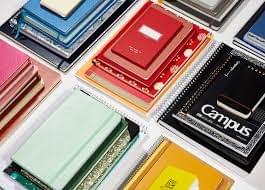A notebook (also known as anotepad, writing pad, drawing pad, or legal pad) is a book or stack of paper pages that are often ruled and used for purposes such as recording notes or memoranda, other writing, drawing or scrapbooking. During the fourteenth and fifteenth centuries, notebooks were often made by hand at home by drawing on them into gatherings that were then bound at a later date. The pages were blank and every note keeper had to make ruled lines across the paper. customized notebook singapore Making and keeping notebooks was [when?] such an important information management technique that children learned its skills in school.
According to a legend,Thomas W. Holley of Holyoke, Massachusetts, invented the legal pad around the year 1888 when he innovated the idea to collect all the sorting, various sorts of substandard paper scraps from various factories, and stitch them together in order to sell them as pads at an affordable and fair price. In about 1900, the latter then evolved into the modern, traditionally yellow legal pad when a local judge requested for a margin to be drawn on the left side of the paper. This was the first legal pad.

The only technical requirement for this typeof stationery to be considered a true “legal pad” is that it must have margins of 1.25 inches (3.17 centimetres) from the left edge.[citation needed] Here, the margin, also known as down lines, is room used to write notes or comments. Legal pads usually have a gum binding at the top instead of a spiral or stitched binding. In 1902, J.A. Birchall of Birchalls, a Launceston, Tasmania, Australia based stationery shop, decided that the cumbersome method of selling writing paper in folded stacks of “quires” (four sheets of paper or parchment folded to form eight leaves) was inefficient. As a solution, he glued half a stack of paper backed by a cardboardbox to create what he called the “Silver City Writing Tablet.”
for additional information keep reading...